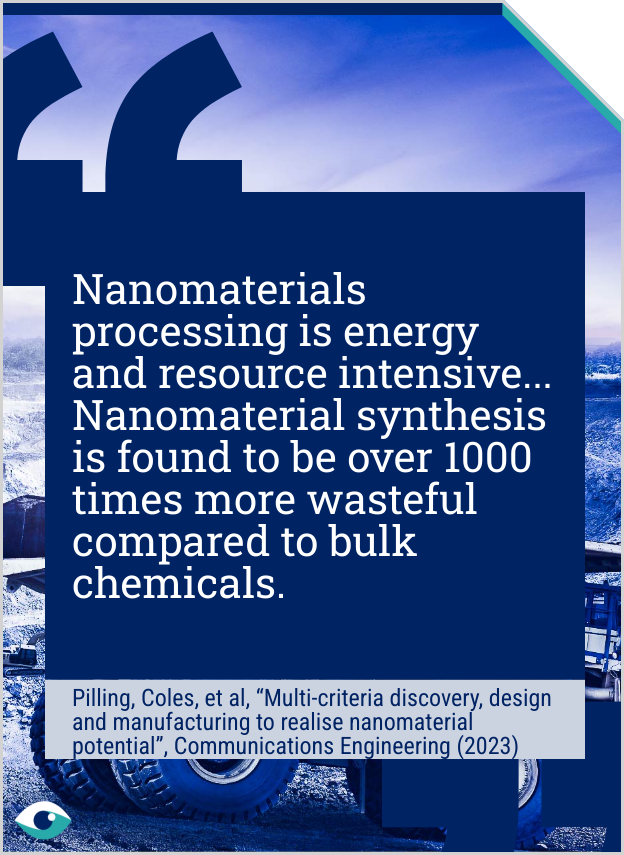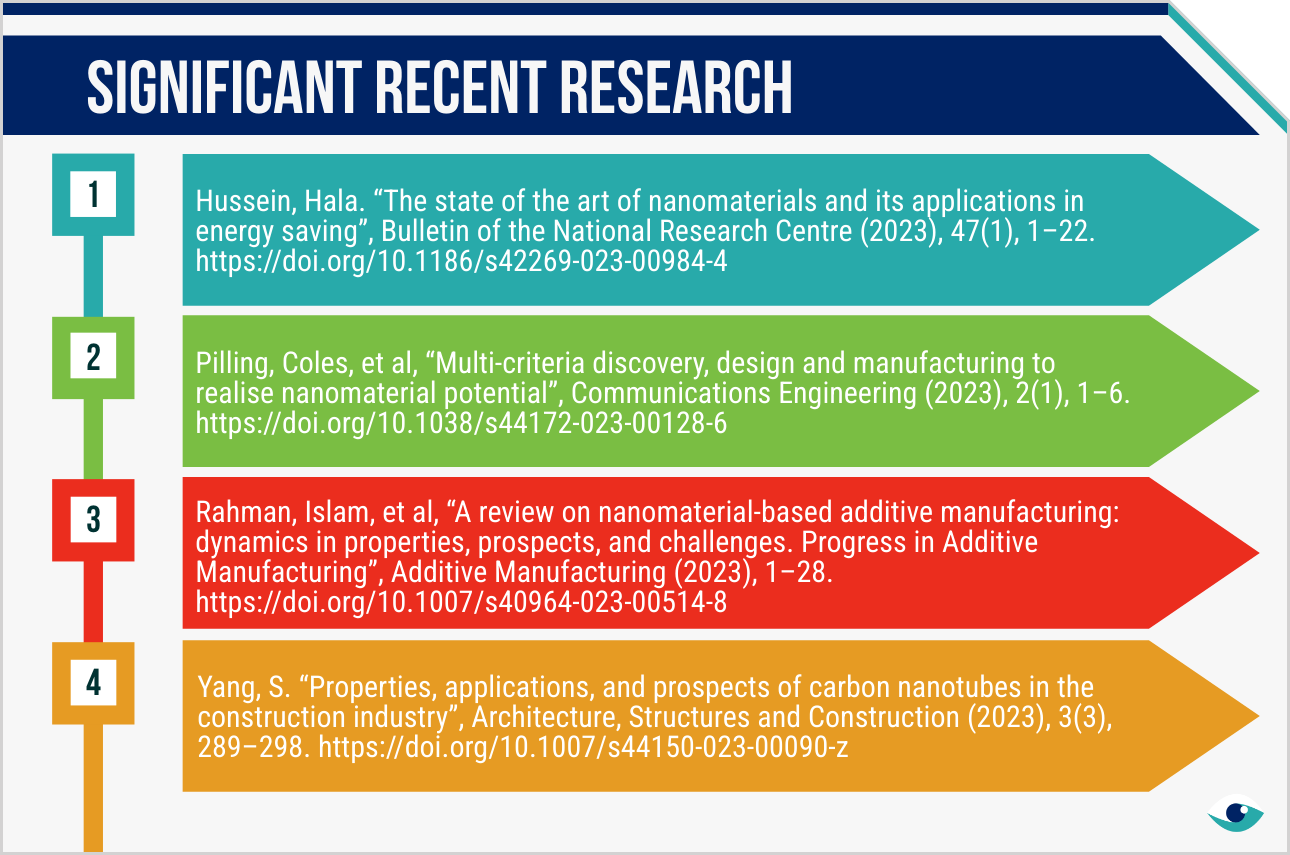Technological advancements in nanomaterials (NMs) are transforming sectors such as energy, healthcare, construction and textiles by enhancing material properties with improved physical, chemical and biological characteristics. However, the full environmental impact of NMs throughout their lifecycle remains unclear, leading to concerns about potential ecological consequences and health hazards from nanoparticle exposure. To mitigate these potential unintended consequences and possible legal repercussions, such as fines or settlements, companies are encouraged to perform comprehensive Life Cycle Assessments (LCAs) of their innovations.

Nanomaterials offer enhanced material properties
Scientific research highlights promising advances in materials technology, yet the lifecycle impacts of nanomaterials remain largely unknown
Technology
Materials (all industries)
AT A GLANCE
Nanomaterials can enhance virtually any property, from mechanical to optical, enhancing strength and durability.
However, nanoparticles pose risks of unintended and unknown environmental and health impacts.
Comprehensive lifecycle assessments must accompany material innovations to mitigate potential fines or settlements.

Scientific innovations
Scientific research continues to reveal groundbreaking properties of NMs, particularly in Additive Manufacturing (AM), also known as 3D printing. A recent study shows that integrating nanoparticles like graphene or carbon nanotubes, can enhance the strength, durability and thermal properties of building materials. This study also found benefits of embedding metallic nanoparticles, like gold, silver and titanium, which can improve the mechanical, electrical and thermal properties of energy storage systems.
Environmental & health concern
Scientific research not only highlights the potential of NMs, but it also raises concerns about their potential environmental and health implications. A second study notes that nanoparticles might inadvertently enter the environment during their synthesis, use or disposal, posing risks of inhalation by organisms, with potential catastrophic health effects. Additionally, the study calls for comprehensive research to close the knowledge gap on nanoparticle behaviour in soil, air and water.

Life cycle assessments needed
To address potential risks associated with NMs, companies increasingly use Lifecycle Assessments (LCA) and Environmental Product Declarations (EPD). These help assess the full environmental impact of NMs from synthesis to disposal. SASB accounting standards compel companies to disclose strategies for managing product lifecycle impacts, including Extended Producer Responsibility (EPR) policies. Failing to proactively address risks could mean financial liabilities from fines or settlements.
Future outlook
Despite promising advancements in NMs, commercial viability presents challenges. NMs are often resource-intensive and costly to produce, with difficulties in scaling production capacities. Their market readiness levels vary, with potential applications still in research and development stages. The industry must focus on innovating production technologies to reduce costs and enhance scalability. Collaborations between industry and research institutions can accelerate the transition from lab to market.
FURTHER READING
- Impact of nanomaterials on health (Joint research centre, EC)
- Regulatory landscape of nanotechnology (US NIH)
- WHO guidelines on nanomaterials (WHO)
